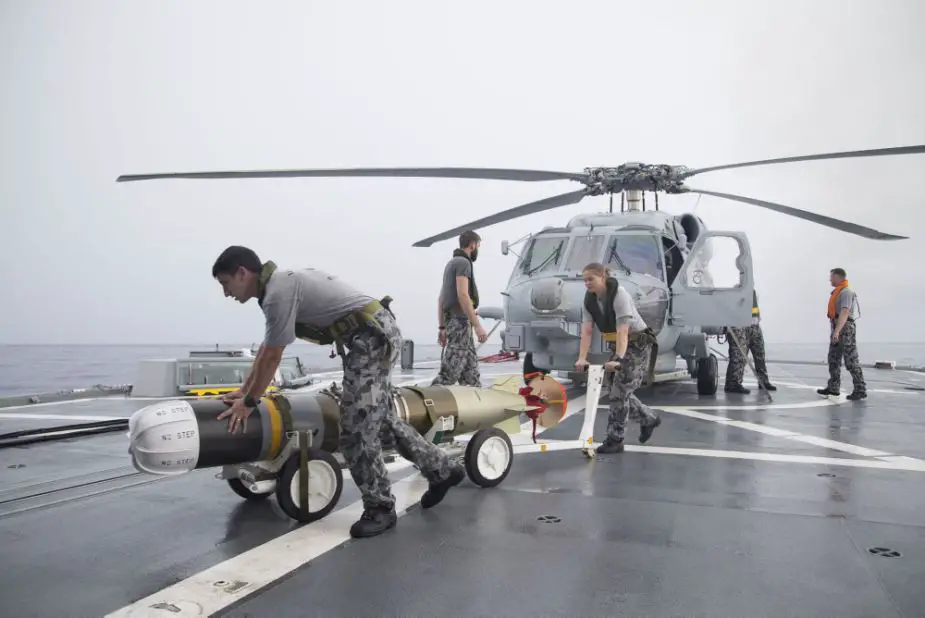Breaking news
Republic of Korea to buy MK-54 Lightweight Torpedoes.
The State Department has made a determination approving a possible Foreign Military Sale to the Republic of Korea of thirty-one (31) MK 54 All Up Round lightweight torpedoes with support for an estimated cost of $72 million. The Defense Security Cooperation Agency delivered the required certification notifying Congress of this possible sale on August 27, 2019.
 The Mark 54 Lightweight Hybrid Torpedo (Picture source: Royal Australian Navy)
The Mark 54 Lightweight Hybrid Torpedo (Picture source: Royal Australian Navy)
The Republic of Korea (ROK) has requested to buy thirty-one (31) MK 54 All Up Round lightweight torpedoes. Also included are torpedo containers, Recoverable Exercise Torpedoes (REXTORP) with containers, Fleet Exercise Section (FES) and fuel tanks, air-launch accessories for fixed-wing, torpedo spare parts, training, publications, support and test equipment, U.S. Government and contractor engineering, technical, and logistics support services, and other related elements of logistics and program support. The total estimated program cost is $72 million.
This proposed sale will support the foreign policy and national security objectives of the United States by meeting the legitimate security and defense needs of one of the closest allies in the INDOPACOM Theater. The Republic of Korea is one of the major political and economic powers in East Asia and the Western Pacific and a key partner of the United States in ensuring peace and stability in that region. It is vital to U.S. national interests to assist the Republic of Korea in developing and maintaining a strong and ready self-defense capability.
The Republic of Korea Navy intends to utilize MK 54 lightweight torpedoes on its P-8A aircraft. The ROK will have no difficulty absorbing this equipment into its armed forces.
The Mark 54 MAKO Lightweight Torpedo, previously known as the Lightweight Hybrid Torpedo (LHT), was co-developed by Raytheon Integrated Defense Systems and the U.S. Navy under the U.S. Navy's Lightweight Hybrid Torpedo program in response to perceived problems with the extant Mark 50 and Mark 46 torpedoes. The Mk 50, having been developed to counter very high-performance nuclear submarines such as the Soviet Alfa class, was seen as too expensive to use against relatively slow conventional submarines. The older Mk 46, designed for open-ocean use, performed poorly in the littoral areas, where the Navy envisioned itself likely to operate in the future.



























